Local Bright Spot
The Power of a Tree
Trees sequester carbon, produce oxygen, slow rainfall, provide habitat for wildlife, help recharge the aquifer, offer shade for heat relief, reduce stress, and the list goes on. Across the state, people are working to plant and preserve more of these natural multi-taskers.
Definition: Carbon sequestration is the process of capturing and storing atmospheric carbon dioxide.
O‘ahu’s 100,000 Trees
Large trees that are placed strategically can lower air conditioning costs by providing shade that reduces temperatures. That’s just one of many reasons why the City and County of Honolulu has committed to planting 100,000 trees across the island by 2025. Goals will be accomplished by working with communities through an adopt-a-tree program and community planting projects. resilientoahu.org/urbanforest
Carbon Neutrality Challenge
In 2018, Camilo Mora led University of Hawai‘i students and volunteers in planting a record-setting 1,000 trees in two hours. Dubbed the Carbon Neutrality Challenge, the next step is to plant 11,000 trees in one day, then a million trees annually after 2021. The goal is to offset all of the state’s carbon emissions, making Hawai‘i the first carbon-neutral state. “We have plenty of tools to combat climate change, the issue is how to implement them in a large enough scale to make a difference,” says Mora, an associate professor of Geography at UH Manoa. “Planting trees is by far the easiest of them.” One of the biggest threats to new saplings is the lack of water. But a newly designed and low-cost rain catchment system will increase the tree survival rate from 50 percent to up to 90 percent, according to Mora. A crowdfunding campaign has been set up to support the project and its goals. uhfoundation.org/Trees
Kona Hema Preserve
The ‘io (Hawaiian hawk), the ‘ōpe‘ape‘a (Hawaiian hoary bat), and songbirds like the ‘i‘iwi (scarlet honeycreeper) and ‘elepaio (monarch flycatcher). These are just a few of the species seen at The Nature Conservancy of Hawai‘i’s (TNC) Kona Hema Preserve, an 8,000-acre area that protects part of an ancient koa and ‘ōhi‘a forest that stretches more than 100,000 acres in South Kona. TNC has actively managed the preserve since 2000, with efforts focused on fencing, removing hooved animals, and controlling invasive plant populations. Now, the non-profit is launching a certified forest carbon sequestration project on the preserve that will produce marketable carbon emission offset credits from existing and still growing koa trees. The income will be reinvested in conservation land management and the project is expected to sequester more than 130,000 tons of carbon over the next 20 years. Ulalia Woodside, TNC Hawai‘i’s executive director says, “One of our main goals for this project is to share our work and demonstrate to other Hawai‘i landowners the carbon sequestration capacity and economic opportunity from native forest management and restoration.”
The DLNR Division of Forestry and Wildlife (DOFAW) is pursuing two carbon forest offset projects that absorb carbon dioxide from the atmosphere and store it in trees and other plants to curb the effects of global climate change. Together the projects are estimated to absorb 192,000 metric tons of carbon dioxide from the atmosphere—equivalent to one year of energy use for nearly 23,000 homes. dlnr.hawaii.gov/forestry/frs/initiatives/forestcarbon
State Carbon Forest Offset Projects
Kahikinui/Nakula
Over the last five years, reforestation efforts by DOFAW and community partners have begun to reverse decades of forest degradation across more than 10,000 acres on the leeward slopes of Haleakala, bringing new life to a dying ancient forest. Reforestation actions include out-planting of more than 250,000 plants—koa‘a‘ali‘i, ‘ōhi‘a, pilo and māmane—removal of feral goats, and construction of more than 30 miles of fencing to keep the area free of hooved animals. The partners are also reintroducing endangered species to the area, including the critically endangered kiwikiu, or Maui Parrotbill. The area is now undergoing carbon certification so that the state can sell carbon offsets, which will be available to the public after trees have grown for about five years.Pu‘u Mali
Since 2004, DOFAW has been working on a reforestation project at Pu‘u Mali, a 5,500-acre area on the north flank of Mauna Kea. The area is a critical habitat for the endangered palila bird, of which only 1,000 exist in the world. In 2017, about half of the expanse became the site of the state’s first public-private partnership carbon forestry project, with Pono Pacific as its partner. The project is still in site planning mode, with an undefined open date for the purchase of carbon credits. Once the project launches, the funds will be invested into the area, which is estimated to need about $5.3 million for restoration and replanting.




